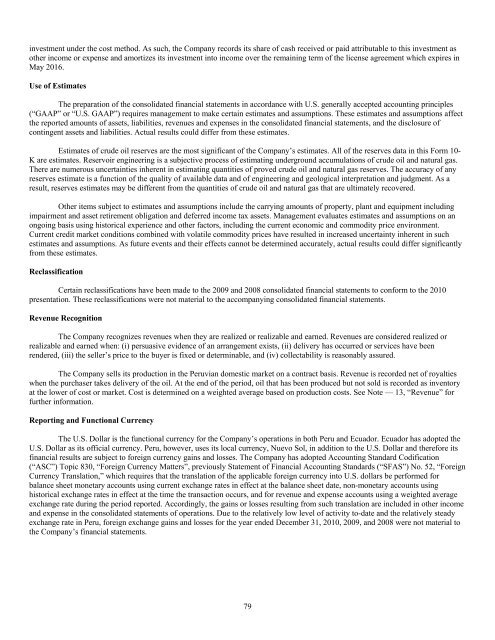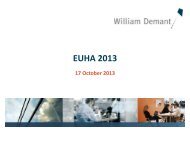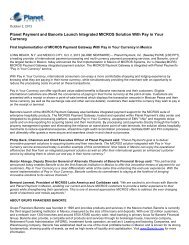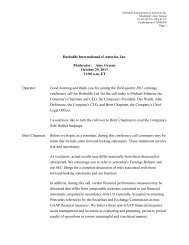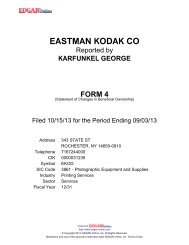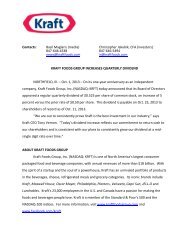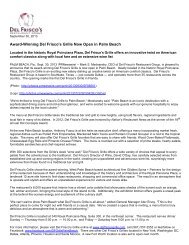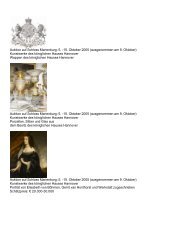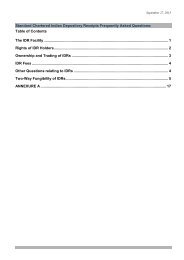BPZ Resources, Inc. - Shareholder.com
BPZ Resources, Inc. - Shareholder.com
BPZ Resources, Inc. - Shareholder.com
Create successful ePaper yourself
Turn your PDF publications into a flip-book with our unique Google optimized e-Paper software.
investment under the cost method. As such, the Company records its share of cash received or paid attributable to this investment as<br />
other in<strong>com</strong>e or expense and amortizes its investment into in<strong>com</strong>e over the remaining term of the license agreement which expires in<br />
May 2016.<br />
Use of Estimates<br />
The preparation of the consolidated financial statements in accordance with U.S. generally accepted accounting principles<br />
(“GAAP” or “U.S. GAAP”) requires management to make certain estimates and assumptions. These estimates and assumptions affect<br />
the reported amounts of assets, liabilities, revenues and expenses in the consolidated financial statements, and the disclosure of<br />
contingent assets and liabilities. Actual results could differ from these estimates.<br />
Estimates of crude oil reserves are the most significant of the Company’s estimates. All of the reserves data in this Form 10-<br />
K are estimates. Reservoir engineering is a subjective process of estimating underground accumulations of crude oil and natural gas.<br />
There are numerous uncertainties inherent in estimating quantities of proved crude oil and natural gas reserves. The accuracy of any<br />
reserves estimate is a function of the quality of available data and of engineering and geological interpretation and judgment. As a<br />
result, reserves estimates may be different from the quantities of crude oil and natural gas that are ultimately recovered.<br />
Other items subject to estimates and assumptions include the carrying amounts of property, plant and equipment including<br />
impairment and asset retirement obligation and deferred in<strong>com</strong>e tax assets. Management evaluates estimates and assumptions on an<br />
ongoing basis using historical experience and other factors, including the current economic and <strong>com</strong>modity price environment.<br />
Current credit market conditions <strong>com</strong>bined with volatile <strong>com</strong>modity prices have resulted in increased uncertainty inherent in such<br />
estimates and assumptions. As future events and their effects cannot be determined accurately, actual results could differ significantly<br />
from these estimates.<br />
Reclassification<br />
Certain reclassifications have been made to the 2009 and 2008 consolidated financial statements to conform to the 2010<br />
presentation. These reclassifications were not material to the ac<strong>com</strong>panying consolidated financial statements.<br />
Revenue Recognition<br />
The Company recognizes revenues when they are realized or realizable and earned. Revenues are considered realized or<br />
realizable and earned when: (i) persuasive evidence of an arrangement exists, (ii) delivery has occurred or services have been<br />
rendered, (iii) the seller’s price to the buyer is fixed or determinable, and (iv) collectability is reasonably assured.<br />
The Company sells its production in the Peruvian domestic market on a contract basis. Revenue is recorded net of royalties<br />
when the purchaser takes delivery of the oil. At the end of the period, oil that has been produced but not sold is recorded as inventory<br />
at the lower of cost or market. Cost is determined on a weighted average based on production costs. See Note — 13, “Revenue” for<br />
further information.<br />
Reporting and Functional Currency<br />
The U.S. Dollar is the functional currency for the Company’s operations in both Peru and Ecuador. Ecuador has adopted the<br />
U.S. Dollar as its official currency. Peru, however, uses its local currency, Nuevo Sol, in addition to the U.S. Dollar and therefore its<br />
financial results are subject to foreign currency gains and losses. The Company has adopted Accounting Standard Codification<br />
(“ASC”) Topic 830, “Foreign Currency Matters”, previously Statement of Financial Accounting Standards (“SFAS”) No. 52, “Foreign<br />
Currency Translation,” which requires that the translation of the applicable foreign currency into U.S. dollars be performed for<br />
balance sheet monetary accounts using current exchange rates in effect at the balance sheet date, non-monetary accounts using<br />
historical exchange rates in effect at the time the transaction occurs, and for revenue and expense accounts using a weighted average<br />
exchange rate during the period reported. Accordingly, the gains or losses resulting from such translation are included in other in<strong>com</strong>e<br />
and expense in the consolidated statements of operations. Due to the relatively low level of activity to-date and the relatively steady<br />
exchange rate in Peru, foreign exchange gains and losses for the year ended December 31, 2010, 2009, and 2008 were not material to<br />
the Company’s financial statements.<br />
79


